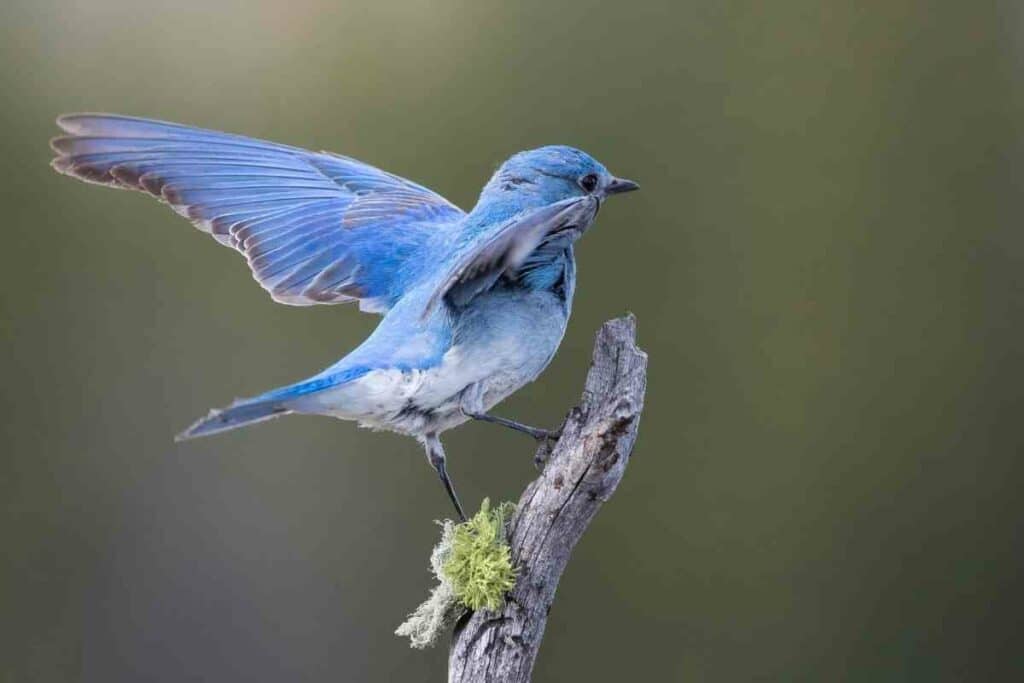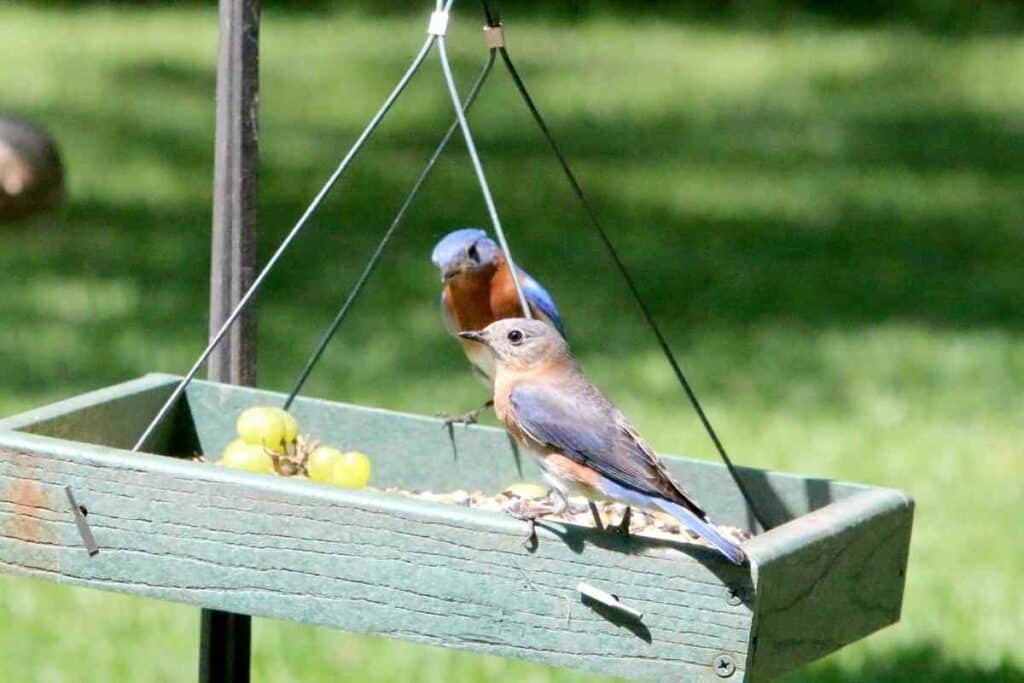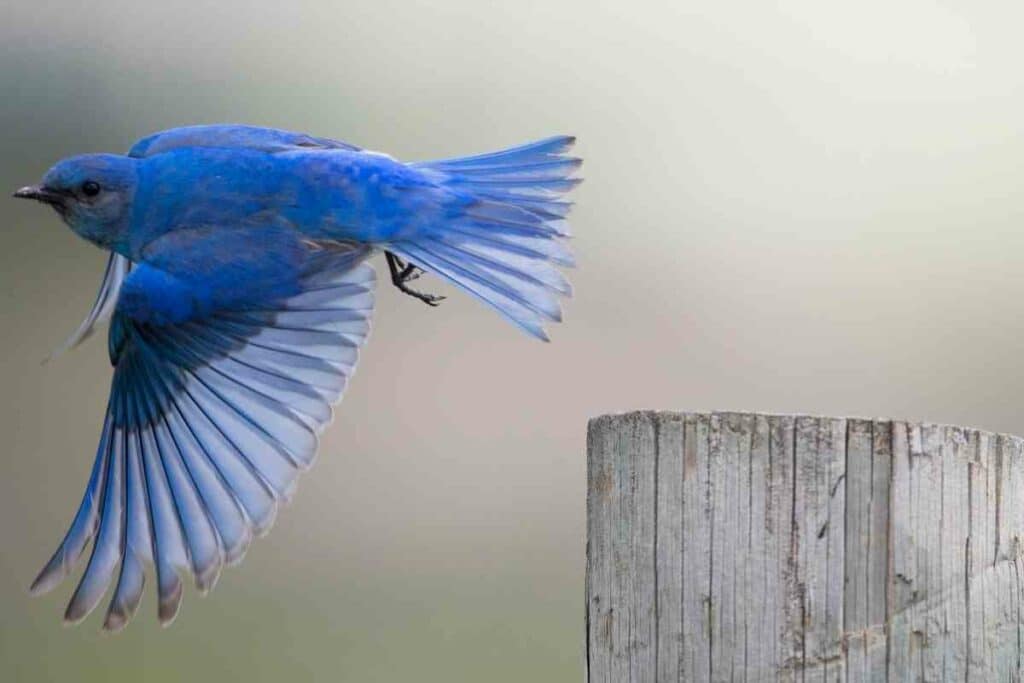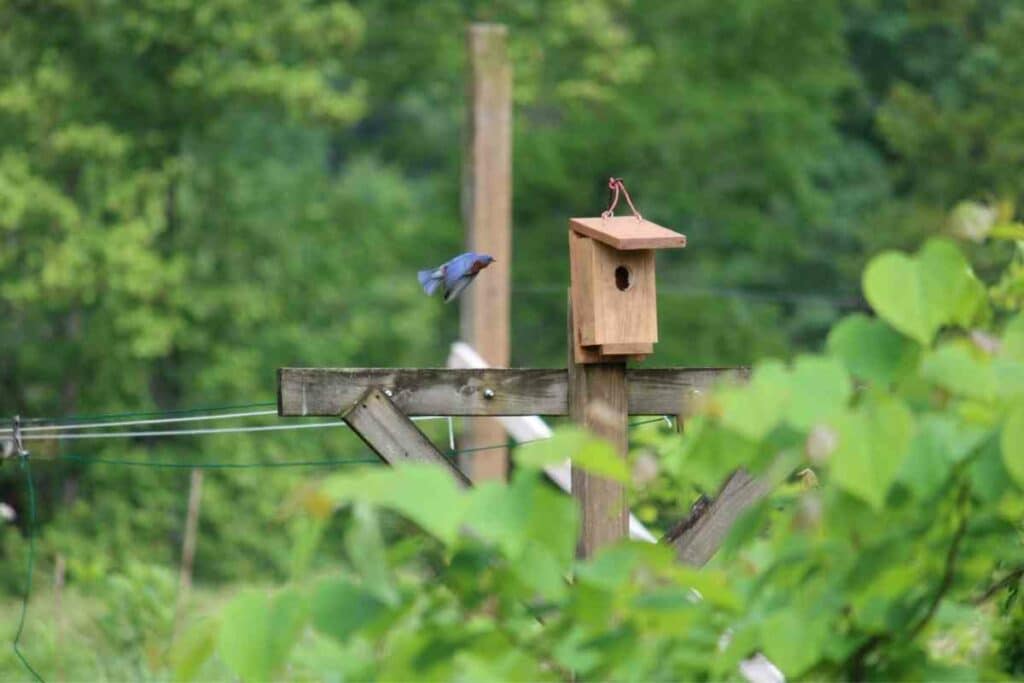It’s a common question that many people ask during the springtime: where do bluebirds go after they fledge?
While some bluebirds stay in their home territory, others will travel great distances to find new food sources and nesting sites.

This can result in some bluebirds ending up in very different places from where they started out!
What Is Fledging?
Before we can answer the question of where bluebirds go after they fledge, it’s important to understand what fledging is.
Fledging is the process by which young birds leave their nest and learn to fly. For most species of birds, this occurs when the chicks are around 4-6 weeks old.
The fledging process is crucial for the survival of young birds. Once they leave the nest, they must be able to fend for themselves in the wild.

This means finding food and shelter, as well as avoiding predators.
The fledging process can be dangerous for young birds, as they are often more vulnerable to predation during this time.
However, the fledging process is also an exciting time for young birds.
Once they leave the nest, they can explore the world around them and discover new places.
For Many Birds – This is the first time they venture far from their home territory.
Where Do Bluebirds Go After They Fledge?
Now that we know a bit more about fledging, let’s take a closer look at where bluebirds go after they leave the nest.
As we mentioned before, some bluebirds will stay in their home territory while others will travel great distances.
Finding Food
A few factors can influence where a bluebird ends up after it fled.

The first is the availability of food. If there is plenty of food available in the bluebird’s home territory, then it is more likely to stay put.
However, if food is scarce, the bluebird may need to travel further afield in order to find enough to eat.
Nesting Site Availability
The availability of potential nesting sites is an important factor that determines where bluebirds will establish their territories.
If there are very few suitable nest boxes or natural cavities in an area, bluebirds may not be able to find a place to nest and will move on to another location.
If you have nest boxes on your property, make sure they are the right size (1 1/2″ entrance hole) and placed in the right location (open areas with some trees nearby).
Always Good Idea – You can also help by putting up bluebird houses in other suitable locations, such as parks or nature preserves.
Finding a Mate
If food and housing are scarce, bluebirds will leave the area to find more bluebirds.

If there aren’t many bluebirds in an area, the chances of finding a mate are slim and bluebirds will move to where there is a higher population density.
Once they find an area with other bluebirds, they will try to find a mate by singing from high perches or chasing each other in the air.
Migration
Migration is another factor that can influence where bluebirds go after they fledge.
Bluebirds usually begin migrating in late September or early October. They typically travel south to find warmer climates and more food during the winter months.
Some bluebirds may only travel a few hundred miles, while others may travel thousands of miles!

Scientists believe that the amount of daylight and temperature changes may play a role in triggering migration.
For Example – Bluebirds may begin to migrate when the days start getting shorter in the fall and the nights start getting cooler.
Bluebirds end up along the border between the United States and Mexico where it’s nice and warm, but not too hot.
Once bluebirds reach their wintering grounds, they will spend the next few months feeding and resting.
They will return to their breeding grounds in the spring when the days start getting longer and the weather starts to warm up again.
Returning to the Nesting Grounds
Once a bluebird fledges, they’re gone from the nest, and likely won’t be returning.
The baby birds will continue living in different trees and bushes until they find their own territories.
A young bluebird’s first year is the most dangerous time in its life, as it has to learn how to survive in the wild on its own.

That’s not to say that they never return to the nests. A bluebird might return to the same nest in the same tree that they fledged from, but they might change things up a bit.
Returning to the same nest comes with risks that could hurt the bluebird’s chances of survival, such as exposing themselves to predators or contracting diseases.
What a bluebird will do, however, is build a new nest on top of the old one.
This is called “renesting.” The new nest will be smaller than the original and won’t have as many eggs.
It’s unclear why bluebirds renest, but it may be because they’re trying to take advantage of a good nesting spot.
Final Thoughts
So, where do bluebirds go after they fledge?
The answer is that it depends on a variety of factors, including the availability of food, nesting sites, other bluebirds, and whether or not they live in a region where they need to migrate for the winter months.
If you’re concerned about the fledglings in your backyard, don’t worry, they may end up coming back if you keep the nesting grounds well kept and make sure they’re fed!


